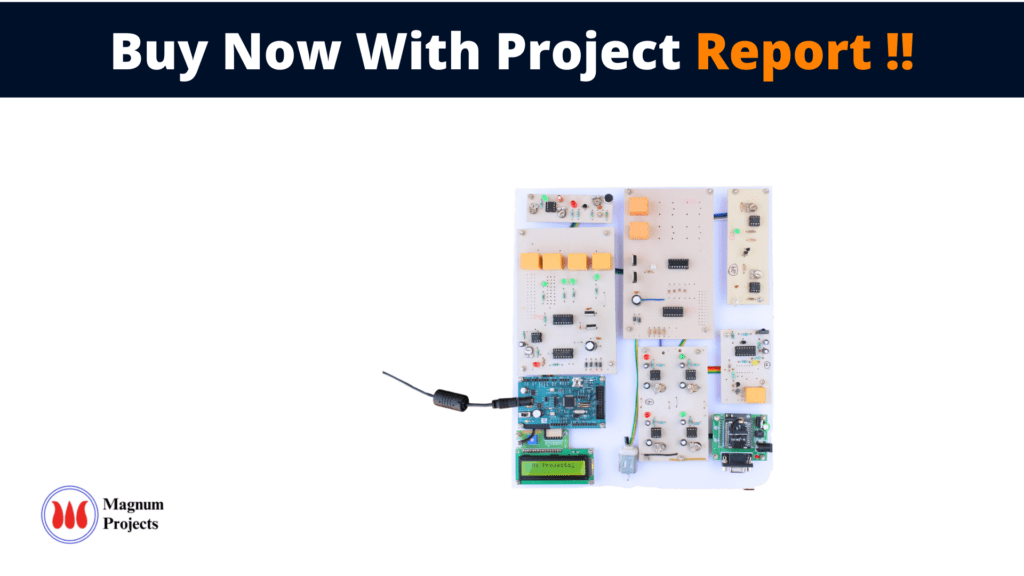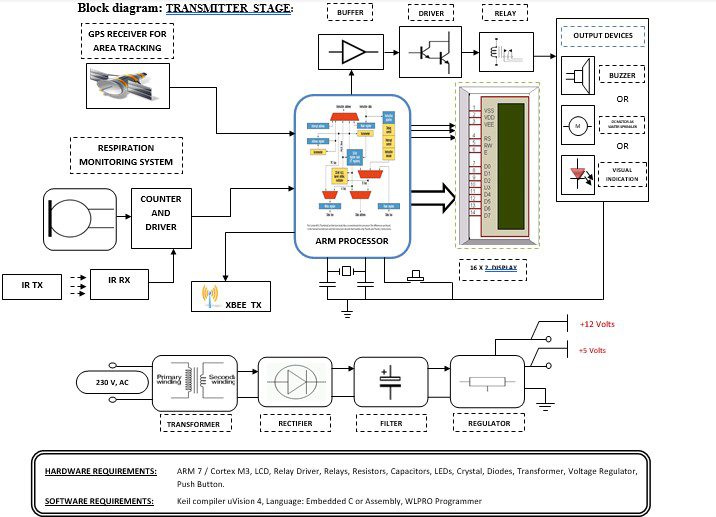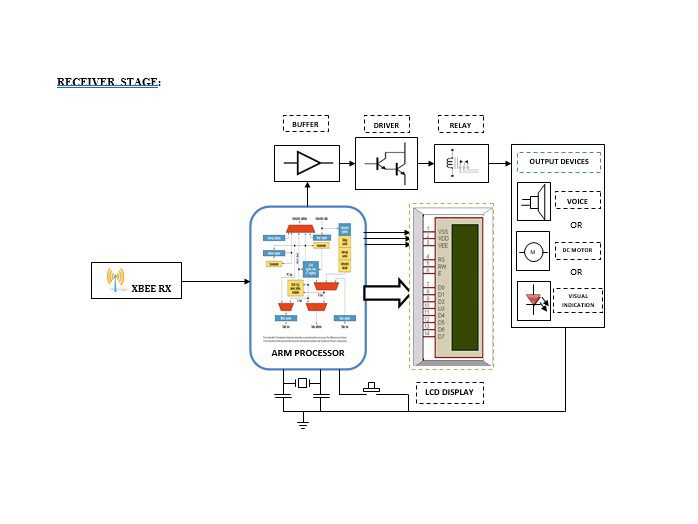Table of Contents
Introduction:


To design a soldier monitoring & tracking system using IR, Zigbee module, and GPS to provide a wireless system for monitoring & tracking the parameters of soldiers are as Respiration & location. Biomedical sensors: Here to find the health status of soldiers we are using a respiration sensor. These parameters are then signal-conditioned and will be stored in the memory. One of the fundamental challenges in military operations lies in that the Soldier is not able to communicate with the control room administrator. In addition, each organization needs to enforce certain administrative and operational work when they interact over the network owned and operated by other organizations. Thus, without careful planning and coordination, one troop cannot communicate with the troops or leverage the communication infrastructure operated by the country troops in the same region. The current problem faced by the military is as follows:
1. Soldier wants to know about location he can’t do that.
2. They will not get help during a panic situation
3. Soldiers are not trackable.




Block diagram explanation :
Power supply unit:
This section needs two voltages viz., +12 V & +5 V, as working voltages. Hence specially designed power supply is constructed to get regulated power supplies.
Zigbee technology:
ZigBee is the name of a specification for a suite of high-level communication protocols using small, low-power digital radios based on the IEEE 802.15.4 standard for wireless personal area networks (WPANs).
- A very low-cost, low power consumption two-way, wireless communication standard for automation, toys & PC peripherals.
- Low power consumption: 6 months to 5 years battery life for most applications.
- Low cost: At least half the cost of Bluetooth solutions.
- The high density of nodes per network: 250 nodes per network, multiple co-located networks.Data rate requirements: Few bits to 250kbps sufficient.
ARM processor:
ARM is a computer processor-based RISC architecture. A RISC-based computer design approach means ARM processors require significantly fewer transistors than typical processors in average computers. This approach reduces costs, heat, and power use. The low power consumption of ARM processors has made them very popular:
The ARM architecture (32-bit) is the most widely used in mobile devices, and the most popular 32-bit one in embedded systems.
ARM processor features include:
- Load/store architecture.
- An orthogonal instruction set.
- Mostly single-cycle execution.
- A 16×32-bit register
- Enhanced power-saving design.
Buffers:
Buffers do not affect the logical state of a digital signal (i.e. a logic 1 input results in a logic 1 output whereas logic 0 input results in a logic 0 output). Buffers are normally used to provide extra current drive at the output but can also be used to regularize the logic present at an interface.
Drivers:
This section is used to drive the relay where the output is the complement of input which is applied to the drive but the current will be amplified.
Relays:
It is an electromagnetic device that is used to drive the load connected across the relay and the o/p of the relay can be connected to the controller or load for further processing.
Metal detector:
A metal detector is an electronic instrument that detects the presence of metal nearby. Metal detectors are useful for finding metal inclusions hidden within objects, or metal objects buried underground. They often consist of a handheld unit with a sensor probe that can be swept over the ground or other objects. If the sensor comes near a piece of metal this is indicated by a changing tone in earphones, or a needle moving on an indicator. Usually, the device gives some indication of distance; the closer the metal is, the higher the tone in the earphone or the higher the needle goes. Another common type is stationary “walk-through” metal detectors used for security screening at access points in prisons, courthouses, and airports to detect concealed metal weapons on a person’s body.
Methodology:
A general block diagram of the proposed scheme is given in Figure. The whole system is divided into two parts transmitter and receiver. In the transmitter part, the respiration sensor monitors the soldier’s health & IR & GPS are for location Detector. The respiration sensor senses the variations then these signals are fed to the ARM, in the ARM it compares with predefined values, if any variation in respiration and co-ordinates is received from GPS it will send them to another receiving station through ZIGBEE which is in concern staff or Head office. At the same time, ARM will generate the output that is fed to buffer IC 4050, buffer stores and given to the driver IC 2003 in driver current will amplify and voltage will invert with the help of Darlington pair circuit of driver IC to drive the relay. Then the signal is given to the output load
for indication purposes.
When ARM receives the data from the Zigbee, it will enable the alert through the Buzzer on the receiver side.
Advantages:
- We can give proper location about location in critical condition.
- We can track them using GPS.
- We are going to help the soldier in panic conditions as control room people we can communicate with them using RF Module. Thus we can help them in panic Conditions.
Disadvantages:
- It increases the cost whereas digital systems reduce the cost of the system.
- Network failure & environmental conditions will cause failure in the system.
Applications:
- Vehicle tracking system.
- Fuel tracking system.
- Digital Heart Rate monitor.
- Patient Monitoring System.
- Bio-Feedback control of robotics and applications.
- Alert SMS.




